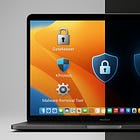Is iOS 26 Ready? Developers Question Apple's Launch
iOS 26 is here, but developers are concerned. Learn about the 'Liquid Glass' design controversy, usability issues, and whether Apple's latest update is ready.
Apple's highly anticipated iOS 26 officially launches today, bringing a wave of new features and a significant design overhaul to iPhones everywhere. The update's most prominent feature, a new design language called "Liquid Glass," has been a topic of intense debate throughout the beta period. As it rolls out to the public, some developers and beta testers are raising concerns, questioning whether the ambitious redesign is truly ready for its primetime debut.
This article delves into the controversy surrounding the iOS 26 launch. We will explore the developer community's mixed reactions, the specific usability issues with Liquid Glass, and whether Apple's latest software is a step forward or a work in progress.
The Controversy Around Liquid Glass
The headline feature of iOS 26 is its "Liquid Glass" aesthetic, which introduces translucent menus, dimensional buttons, and dynamic visual effects that interact with on-screen content. Apple's goal is to create a more immersive experience where the interface blends seamlessly with the user's content, theoretically reducing distraction.
However, many developers argue that the execution achieves the opposite. During the beta testing phase, feedback highlighted significant issues with legibility, contrast, and overall usability. While Apple has made adjustments based on this feedback, a number of experts remain unconvinced that the core problems have been solved.
Craig Grannell, writing for Wired, noted that the new design often "muddies" focus rather than sharpening it due to legibility issues and distracting visual effects. This sentiment is echoed by several prominent app developers who have worked with the new interface for months.
Expert Opinions: Friction Over Focus
The primary criticism leveled against Liquid Glass is that it creates unnecessary friction. Ben McCarthy, creator of the popular Obscura Camera app, explained that the design's distortions and constantly shifting colors can catch the user's eye and pull attention away from the content itself. "Apple’s goal is to blend interface and content to reduce distraction, but I think Liquid Glass achieves the opposite," McCarthy stated.
Jonas Downey, a designer for Hello Weather, shared a similar view. He pointed to several specific problems:
Translucent Components: These create visual noise and make it harder to focus on the task at hand.
Low Contrast: The subtle color variations make it difficult to differentiate between interactive elements and static content.
Excessive Dimension: Buttons and tabs sometimes pop more than the content, creating a confusing visual hierarchy.
Even former Apple employees have voiced concerns. Gulliaume Ardaud, who worked at Apple for seven years, highlighted the tension between the design's stated goals and its actual implementation. The idea is to elevate content, but in reality, interface elements often partially obscure it, creating a "swirl of distracting, constantly shifting colors" as the user scrolls.
Inconsistency and Unfinished Feel
Beyond the fundamental design philosophy, users in the beta program have pointed out inconsistencies in how Liquid Glass is applied across the operating system. For example, on watchOS, the notification view is highly translucent, while the Control Center is more frosted and easier to read. On iOS, the PIN entry on the lock screen is glassy and transparent, but entering a PIN to authorize a computer backup reverts to the flat UI of previous iOS versions.
These inconsistencies contribute to a feeling that the software is unfinished. One beta tester noted, "even if you do like the concept of Liquid Glass, we should all acknowledge the fact that there are genuine usability issues and that Liquid Glass in its current state is not ready for release." This suggests that Apple may have rushed the launch to meet its annual September release schedule, even if the software needed more time in development.
A Balanced View: Potential and Pitfalls
Despite the widespread criticism, not everyone is against the new design. Some users have grown to appreciate the modern look and feel, arguing that the initial awkwardness fades as they adapt to the new interface. Proponents point out that Apple has a history of launching controversial designs, like the minimalist look of iOS 7, which eventually became the standard.
The official launch is not the end of the road for iOS 26's development. Apple will undoubtedly continue to refine Liquid Glass in subsequent point releases, addressing the most pressing usability concerns. The question is whether the company should have waited for a .1 or .2 update to release such a significant and divisive change.
Conclusion: An Ambitious But Flawed Launch
The launch of iOS 26 marks a bold new direction for Apple's mobile operating system. The Liquid Glass design is ambitious, aiming to create a more fluid and content-focused user experience. However, the chorus of criticism from developers and beta testers suggests that in its current form, the design falls short of its goals, often introducing more distraction than it eliminates.
For users updating today, the experience may be jarring. While many will adapt, the concerns about legibility, consistency, and overall usability are valid. It appears Apple has prioritized its release schedule over polish, delivering a product that feels more like a public beta than a finished piece of software. As always, cautious users may want to wait for the first bug-fix update before making the jump.
Limited Offer : Skip one coffee ☕ a month and you’ve already paid for Premium.
and get daily prime, exclusive articles straight to your inbox.
if you enjoyed, comment if you’ve got opinions!
❤️ Like & restack & share this post to keep Apple Secrets reaching more people .



